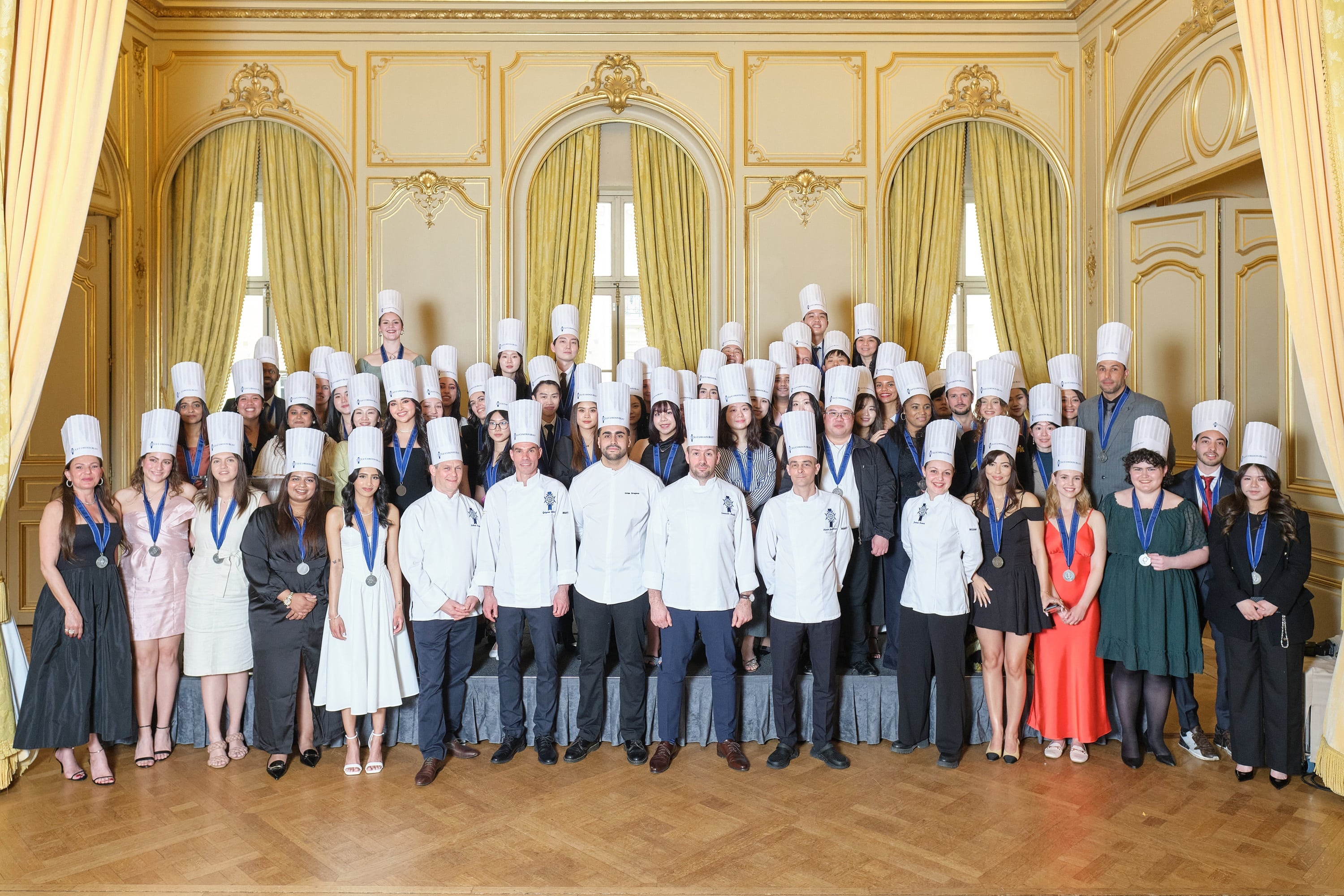
Graduation ceremony - Pastry and Bakery
The graduation ceremony for our pastry and bakery students took place on March 21. Congratulations to all graduates on their well-deserved success!
How did you interpret the MUSE concept? Can you describe working with the students who created the concept?
Europain should be congratulated for coming up with this bold and innovative concept. It marks a new direction for the exhibition, which will return once again to the Porte de Versailles in January. Europain (GL Events) tasked us with providing support to Le Cordon Bleu Paris Institute students and Chef Instructors, from the very launch of the project right through to its completion. In real terms, this consisted of working with each team at the Institute. We gave them details of global boulangerie trends and split them into groups so that they could share their ideas. Our role was to provide them with support, to help them to draft out their projects, interpret and express their creativity by offering actual solutions.
This project proved to be extremely rewarding, as we don’t typically have the opportunity to work with students and their approach is very different to that of our usual clientele. The challenge was interesting, because it involved taking an educational project and making it understandable, concrete and commercially viable, whilst also taking into account the constraints imposed by the exhibition. Despite having shown them the roughs and all the design steps, we still can’t wait for them to see their boulangerie of the future for the first time on 11 January 2020. We are extremely proud, as we feel that we stayed true to their ideas and, as such, the Muse project will really come to life at the exhibition.
What visual identity did you give to this boulangerie of the future? What materials did you use?
We wanted to create a logo which would be inspirational. In line with the concept created by Le Cordon Bleu Paris institute students, it is contemporary, thanks to the use of understated lettering and colouring. We used the same philosophy for the interior design, with warm colours creating a cosy and friendly feeling and contributing to making the boulangerie of the future a dynamic space.
The students came up with a layout which combines artisanal elements and modernity. The lettering, for example, is in chalk. We played with industry codes, by creating large glass panels to create contrast and an extremely contemporary touch. We also used wood and installed a green wall to make the students’ wish, of seeing the environment play a starring role, come true.
What impact will this have on the type of experience the customers have?
The students were keen to create a lively space, with sharing at the fore. We therefore decided that the tasting area should be larger than those used for sales and production. Everything has been designed to ensure that customers have a great experience throughout the day: whether for breakfast, lunch, afternoon tea, aperitif, or dinner.
The boulangerie of the future is no longer somewhere you simply pass through, but where the customer can have a truly memorable experience. Similarly, we envisaged the sales area as a “pick your own” and broke away from traditional shelf display systems. Customers can, therefore, stroll around and help themselves. These concepts are already widely used around the globe but have been slow to take off in France. The gourmet element is, however, accentuated when the customer can see the products close up. The students also wanted the space to be free of payment machines. This idea is very interesting, because it enables the relationship between the salesperson and the customer to become the main focus by putting the notion of money to one side.
More generally speaking, what are the most recent retail trends? What are the new practices in shops?
The “food court” philosophy will become more and more widespread, reflecting all these new venues that are springing up. Customers will be able to choose what they want according to their own personal taste and come together in a common space to consume it.
In addition, the digitalisation of the point of sale is a key element in these new practices. Artisans are often reluctant, but it is important to see technology as an ally in everyday life. By collecting data on their customers and the orders they place, boulangerie chefs would, for example, be able to make tailor-made special offers. Taking things a step further, by automating certain tasks, the boulangerie chef’s time would be freed up so that they could devote more of it to advising customers. Why not then envisage the artisan or miller of the future being in direct contact with the customers?
Le Cordon Bleu, partner of the 2020 Europain exhibition, shares its vision of the boulangerie of the future: Europain Lab – Read More
Interview with Alexandre Viron, CEO at Moulins Viron – Read More
Copyright © 2025 Le Cordon Bleu International B.V. All Rights Reserved.